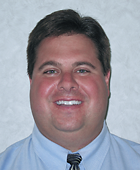Treating Insomnia: What Are Benefits and Risks of Hypnotics?
Abstract
Short sleep duration—less than six hours of sleep a night—is common in 37 percent of adults aged 20 to 39 years and 40 percent of adults aged 40 to 59 years, reports the National Health and Nutrition Examination Survey.

Insomnia is a very common symptom in a variety of psychiatric and medical disorders. It can also be a primary diagnosis for some patients. The approaches to treating insomnia vary widely.
It is always good clinical practice to begin with a focus on patient education and a review of the tenets of good sleep hygiene. Do not assume that patients know this information—it is sometimes surprising to learn of the misconceptions that so many of our patients have about sleep.
I typically begin with an introduction of what a normal night of sleep should look like, with patients hopefully falling asleep within 12 to 20 minutes of getting into bed and sleeping for seven to eight hours with no more than a few brief interruptions in sleep. Normally, individuals should be able to fall quickly back to sleep within a few minutes after the interruptions.
I also describe how they should awake in the morning—feeling reasonably refreshed and as if their night of sleep was restful and restorative.
I also review good sleep hygiene practices with patients:
Try to maintain a consistent sleep and wake time throughout the week.
Avoid eating large amounts of food immediately before bed.
Avoid the use of stimulants such as caffeine or nicotine close to bedtime.
Avoid strenuous physical activity immediately prior to sleep, if it causes difficulty in falling asleep.
Maintain a sleep environment that is comfortable, quiet (or with white noise), and free from distractions such as televisions, video games, loud music, laptops, tablets, and so on.
If a patient’s symptoms of insomnia have not responded adequately to nonpharmacologic interventions such as those mentioned above, as well as cognitive-behavioral therapy, patients may benefit from pharmacologic intervention.
There are several families of medications that are a part of the gamma-aminobutyric acid (GABA) acting agents that are commonly used for the treatment of insomnia:
Barbiturates: phenobarbital, secobarbital
Benzodiazepines: temazepam, estazolam, flurazepam, quazepam, triazolam
Nonbenzodiazepine hypnotics: zolpidem, zaleplon, eszopiclone
Sedating antidepressants: trazodone, amitriptyline, doxepin, mirtazapine
Antihistamines: diphenhydramine
Antipsychotic medications: quetiapine, olanzapine, asenapine, and so on
Other hypnotic medications: ramelteon, DORAs (dual orexin receptor antagonists, a new class of hypnotics expected to come to market soon)
There are some general comments that can be made about the various classes of medications.
Barbiturates, benzodiazepines, and antidepressant medications can help with sleep onset and increasing the amount of time spent in bed, but they may reduce the more important/restorative stage of sleep—slow wave sleep/stage 3 sleep—and lead to sleep that is less efficient or restorative.
The barbiturates and benzodiazepines carry higher risks of dependency and the development of tolerance over time. The nonbenzodiazepine hypnotics appear to have less of a negative impact on sleep architecture, and less (but not zero) risk of dependency and tolerance.
Antihistamines are generally sedating and do not cause dependence, but patients may find that they develop tolerance over time and may suffer from next-day drowsiness (which can be a potential issue with most of these medications to some extent, e.g., some antihistamines are anticholinergic and may cause confusion and/or delirium especially in the elderly).
Antipsychotic medications can be very sedating, though better at preserving normal sleep architecture. Because antipsychotics are associated with side effects such as weight gain, metabolic symptoms, and tardive dyskinesia, they should be prescribed with strong caution—especially since antipsychotics are not approved by the Food and Drug Administration for treating sleeping disorders. In addition, they pose an increased risk of death from cerebrovascular causes in geriatric patients.
Other, novel hypnotics such as ramelteon and DORAs target more specific psychopharmacology that may offer different levels of efficacy and side-effect burden.
The effective psychopharmacologic treatment of insomnia can offer patients an improved quality of life, and it also may enhance clinicians’ ability to more effectively treat comorbid conditions such as fatigue, chronic pain, and cognitive impairment, as well as a variety of other illnesses.
Screening and appropriately treating patients for clinically relevant sleep disorders can be of significant benefit, allowing us to more effectively treat their psychiatric conditions and to improve their overall wellness. ■



